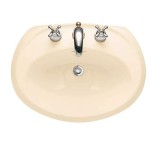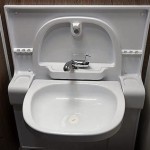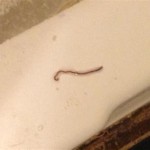How To Install A New Drain Stopper In Bathroom Sink
Bathroom sink drain stoppers, while seemingly insignificant, are crucial for retaining water for washing, shaving, and other daily routines. Over time, these stoppers can become corroded, damaged, or simply ineffective due to wear and tear. A malfunctioning drain stopper can lead to the inconvenience of water continuously draining or the frustration of a stopper that doesn't seal properly. Fortunately, replacing a drain stopper is a relatively straightforward plumbing task that most homeowners can accomplish with the right tools and a bit of patience. This article provides a comprehensive guide on how to install a new drain stopper in a bathroom sink.
Before beginning the installation process, it is essential to gather the necessary tools and materials. Having everything readily available will streamline the process and minimize potential interruptions. The following items are typically required:
- New drain stopper assembly (ensure compatibility with the sink).
- Adjustable wrench.
- Pliers (optional, but helpful for gripping).
- Basin wrench (useful for loosening hard-to-reach nuts).
- Plumber's putty.
- Clean rags or paper towels.
- Bucket or container to catch water.
- Gloves (optional, for hand protection).
- Safety glasses (recommended).
Once the tools and materials are assembled, the first step is to remove the old drain stopper assembly. This process involves disconnecting the existing stopper and its associated linkage from the drainpipe. The specific steps may vary slightly depending on the type of drain stopper installed, but the general principles remain the same.
Removing the Old Drain Stopper Assembly
Begin by placing a bucket or container under the sink to catch any residual water that may be present in the drainpipe. This will prevent water from spilling onto the floor and causing a mess. Next, locate the pivot rod, which is a horizontal rod that connects the drain stopper to the lift rod (the rod that controls the stopper from above the sink). The pivot rod is held in place by a nut that needs to be loosened.
Use an adjustable wrench to carefully loosen the nut that secures the pivot rod to the drainpipe. Be cautious not to overtighten or damage the nut. Once the nut is sufficiently loose, the pivot rod should be able to slide out of the drainpipe. Remove the pivot rod completely and set it aside.
With the pivot rod removed, the next step is to detach the lift rod from the linkage. Locate the clevis screw, which connects the lift rod to the strap that is connected to the pivot rod. Loosen the clevis screw using pliers or an adjustable wrench. Once the screw is loosened, the lift rod should be able to be disconnected from the strap.
Depending on the type of drain stopper, there may be a stopper mechanism inside the drainpipe. If there is a stopper mechanism, carefully remove it from the drainpipe. This may involve unscrewing or lifting the stopper out of the drainpipe. Be sure to note how the stopper mechanism is positioned before removing it, as this will be helpful when installing the new drain stopper.
Now that the stopper mechanism and linkage are disconnected, the next step is to remove the drain flange from the sink. The drain flange is the part of the drain assembly that sits inside the sink basin. The drain flange is typically held in place by a large nut underneath the sink. This nut can sometimes be difficult to loosen due to corrosion or being tightly secured.
Use a basin wrench to loosen the nut underneath the sink that secures the drain flange. A basin wrench is a specialized tool designed for loosening nuts in tight spaces, such as under a sink. If a basin wrench is not available, an adjustable wrench may be used, but it may be more challenging to access the nut. Once the nut is loosened, carefully unscrew it completely and remove it from the drainpipe.
With the nut removed, the drain flange should now be free to be removed from the sink. Carefully push the drain flange up from underneath the sink and through the drain opening. If the drain flange is stuck, gently rock it back and forth while applying upward pressure. Once the drain flange is removed, clean the sink surface around the drain opening to remove any old plumber's putty or debris.
After the old drain stopper assembly is completely removed, the next step is to prepare the new drain stopper assembly for installation. This involves applying plumber's putty to the underside of the drain flange to create a watertight seal. Plumber's putty is a pliable, waterproof compound that is used to seal plumbing connections.
Preparing and Installing the New Drain Stopper Assembly
Take a generous amount of plumber's putty and roll it into a rope that is approximately the same diameter as the drain flange. Apply the rope of plumber's putty to the underside of the drain flange, ensuring that it completely encircles the drain opening. Press the putty firmly against the drain flange to create a solid, even seal. Excess putty will be squeezed out during the installation process, which can then be easily cleaned up.
Carefully insert the new drain flange into the drain opening from above the sink. Press down firmly on the drain flange to ensure that it is seated securely in the drain opening and that the plumber's putty is making good contact with the sink surface. Any excess putty that is squeezed out can be removed with a clean rag or paper towel.
From underneath the sink, slide the rubber washer and cardboard friction ring (if supplied) onto the drainpipe. These washers help to create a watertight seal between the drain flange and the drainpipe. Then, screw the large nut onto the drainpipe, tightening it by hand until it is snug. Use a basin wrench or adjustable wrench to further tighten the nut, ensuring that the drain flange is securely held in place. Be careful not to overtighten the nut, as this could damage the sink or the drainpipe.
Once the drain flange is securely installed, the next step is to install the drainpipe extension with the pivot rod opening. This is the part of the drain assembly that connects to the P-trap and also houses the pivot rod. The drainpipe extension is typically screwed onto the underside of the drain flange.
Apply Teflon tape to the threads of the drain flange where the drainpipe extension will be screwed on. Teflon tape helps to create a watertight seal and prevents leaks. Screw the drainpipe extension onto the drain flange, tightening it by hand until it is snug. Use an adjustable wrench to further tighten the drainpipe extension, ensuring that it is securely connected to the drain flange.
Connecting the Linkage and Testing the Installation
Now, insert the new stopper mechanism into the drainpipe from above the sink. The specific method for inserting the stopper mechanism will vary depending on the type of stopper assembly. Some stoppers simply drop into place, while others require a specific orientation or locking mechanism. Refer to the manufacturer's instructions for specific details on how to install the stopper mechanism.
Next, insert the pivot rod through the opening in the drainpipe extension and through the hole in the stopper mechanism. Secure the pivot rod in place by tightening the nut that holds it to the drainpipe extension. Be careful not to overtighten the nut, as this could damage the pivot rod or the drainpipe extension.
Connect the lift rod to the strap using the clevis screw. Adjust the height of the lift rod to achieve the desired stopper position. When the lift rod is in the up position, the stopper should be fully open, allowing water to drain freely. When the lift rod is in the down position, the stopper should be fully closed, preventing water from draining. Tighten the clevis screw to secure the lift rod in place.
After the linkage is connected, test the drain stopper to ensure that it is working properly. Fill the sink with water and check for any leaks around the drain flange, the drainpipe extension, and the pivot rod. If any leaks are detected, tighten the connections as needed. Additionally, test the stopper's ability to hold water and release it when the lift rod is manipulated. Adjust the clevis screw, if necessary, to fine-tune the stopper's operation.
Once the installation is complete and the drain stopper is functioning correctly, clean up any excess plumber's putty or debris. Dispose of the old drain stopper assembly and any other waste materials properly. With the new drain stopper installed, the bathroom sink is once again equipped for efficient water retention and drainage.

How To Replace A Sink Stopper Quick And Simple Home Repair
Install A Drain Stopper So The Is Removable

Step By Guide On How To Install Sink Pop Up Drain Stopper

How To Replace Bathroom Sink Stopper Avg Cost 25 65 1 2hrs

How To Replace A Pop Up Sink Drain Remove The Old Bathroom Stopper Repair

How To Install Bathroom Sink Drain And Pop Up Stopper Diy Drainstopper

How To Replace A Sink Stopper Quick And Simple Home Repair

How To Fix Or Maintain Your Sink S Pop Up Mechanism

How To Replace Or Maintain A Sink Pop Up Drain Assembly

Bathroom Sink Popup And Stopper Problems
Related Posts







